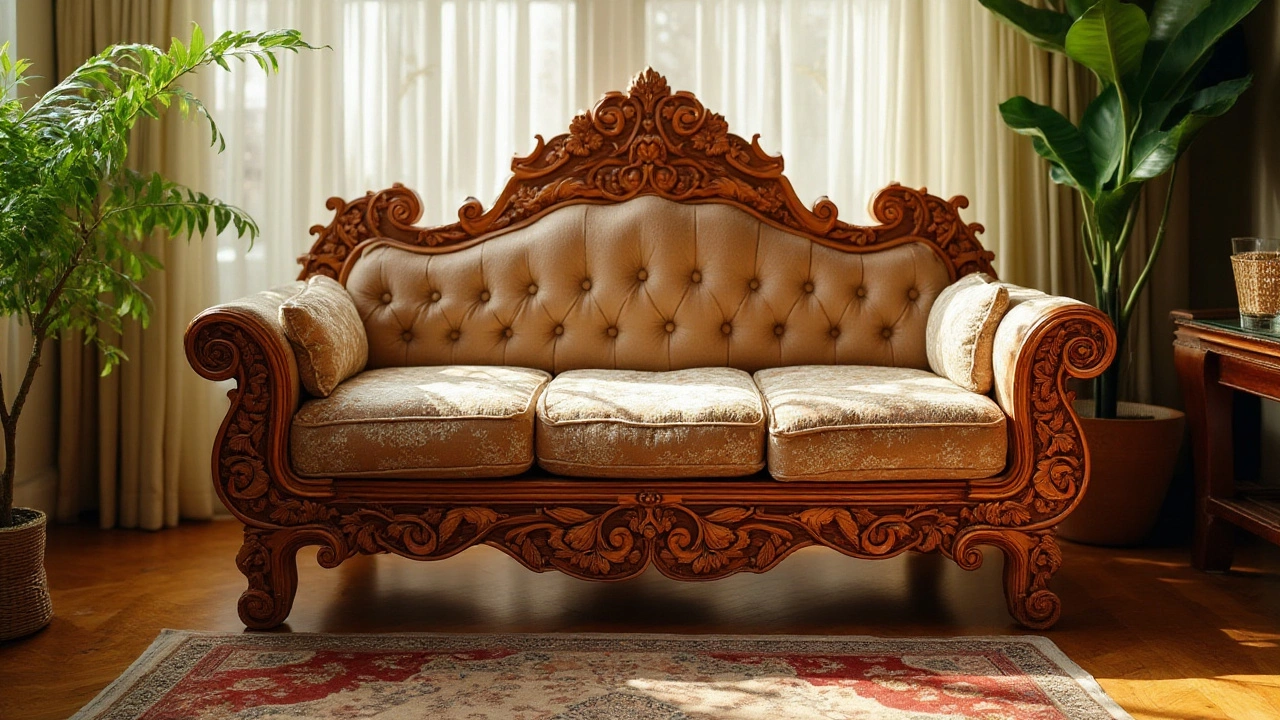Best Wood for Sofa: Choosing the Right Material for a Long‑Lasting Seat
When you buy a sofa, the frame is the hidden hero. A good frame holds the cushions, keeps the shape, and takes the daily wear. The wood you pick decides how long the sofa will stay sturdy and how it looks in your living room. Below you’ll find the most popular woods, what makes each one special, and quick tips to help you decide.
Why Wood Matters for Sofas
Solid wood frames are stronger than particle board or MDF. They resist sagging, handle heavy use, and can be repaired if something goes wrong. Wood also reacts to humidity, so a stable species reduces warping. Finally, the grain and color add natural beauty that matches many décor styles.
Top Wood Choices and Their Benefits
Oak – Oak is a classic choice for Indian furniture makers. It’s hard, resists dents, and has a distinctive grain that looks great with either light or dark finishes. Because oak is widely available, it’s usually mid‑range in price.
Teak – If you want a sofa that can survive humid summers, teak is the go‑to wood. Its natural oils keep it from swelling or cracking, and it ages to a beautiful silver‑gray if you let it untreated. Teak is pricier, but the durability often pays off.
Mahogany – Mahogany brings a deep reddish tone and smooth texture. It’s strong enough for a firm frame yet easy to sand and finish. The main drawback is that genuine mahogany can be hard to source sustainably, so look for plantation‑grown options.
Pine – Pine is light, easy to work with, and the cheapest of the solid woods. It’s great for casual sofas or for a rustic look. Because pine is softer, it may dent more easily, so a good finish is essential.
Mango wood – An eco‑friendly option that’s gaining popularity. Mango is dense, has a quirky grain pattern, and is often reclaimed from old orchards. It’s affordable and adds a unique story to your sofa.
When you compare these woods, think about three things: how much you’ll sit on the sofa, the climate where you live, and your budget. A sturdy oak or teak frame will handle daily use for years, while pine works well for a light‑use guest sofa.
Finishing the wood matters, too. A clear polyurethane coat protects the surface without hiding the grain. If you prefer a matte look, consider a water‑based varnish. Avoid oil‑based finishes in homes with strong smells or where kids play, as they can off‑gas.
Finally, ask the manufacturer about the joinery. Dovetail or mortise‑and‑tenon joints are signs of quality work. Screws alone may loosen over time, especially on softer woods.
By matching the wood’s strength, appearance, and price to your needs, you’ll end up with a sofa that looks good and stays solid for years. Choose wisely, and enjoy a comfy seat that’s built to last.
Best Types of Wood for Sofas in India: Your Ultimate Guide
Choosing the right wood for your sofa in India involves understanding material properties, aesthetics, and durability. Teak, Sheesham, and Sal wood are popular options due to their robustness and beauty. Each type of wood has unique qualities that make it suitable for different styles and environments. It's important to consider both the environmental conditions in India and the maintenance needed for each wood type. This guide helps you make an informed decision for a long-lasting and beautiful sofa.
Read More



